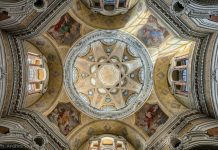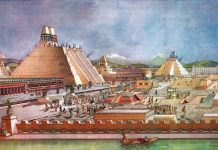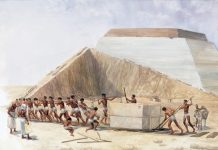All treatises talk about the need for self-knowledge, reading the “scroll” of one’s being and the world. In other words, the process of cognition is presented as a constant search for similarity relations and connections between man and the world. Hence the appeal to numerical symbolism, which underlies all the arguments about “elements and worlds”. The desire to order abstract and concrete representations of the world by establishing numerical relations-similarities between different systems can be correlated in modern theory of knowledge with the method of symmetry.
Traditional texts emphasize the need to identify analogies between the elements of the big world (the universe) and the small world (man). These analogies are most often found by operating with a universal set of “four elements”. The names of the four elements (elements) and six sides embedded by the creator in the “human being” – in these terms, the beginnings of self-knowledge are formed as ways of knowing the surrounding world. In full accordance with this, they are called and applied by the Nizami. Having asked the rhetorical question “What is the world?”, Nizami answers: “A tree with six sides and four roots.”
Poetic images help to understand the specifics of the architectural iconography of Central Asia. Since the ancient Indo-Europeans represented the structure of the world (i.e., the earth and the sky) in the form of a square and a circle, then architectural forms built on a combination of these figures can be considered as a traditional reproduction of the structure of the universe.
The reconstruction of the “model of the world” gives reason to believe that the concentric system in the architectural composition of the Middle Ages is a translation into a graphic code of the main content of the fundamental ideas of traditional cosmology.
Isolating the “ideas of symmetry” in the culture of Central Asia of the XV-XVII centuries, it is impossible not to touch upon the issue of social relations in society. This question, as, indeed, all the topics that we involve for research purposes, is unusually broad and complex. Nevertheless, it would be a mistake to leave it aside, since social relations certainly influenced the formation of the principles of construction, and therefore the social aspect of the symmetry of architectural space and architectural form is extremely important for understanding the phenomenon of architectural symmetry in general.
Concretizing the task, we pose the question in this way: what methods of composition in architecture could embody the idea of the monarchy of power – the leading principle of the political and social life of medieval Central Asia. This idea is clearly expressed in the words of Timur: “As there is one god in heaven, so there must be one king on earth. The whole world does not deserve to have more than one king.” Thus, the genesis of the courtyard-aivan planning scheme, which is a combination of a rectangular courtyard with a deep vaulted ivan lying on the axis of the courtyard and facing in its direction, convinces that the very idea of such a composition “existed wherever the ideology of slaveholding or feudalizing ancient Eastern despotism required the artistic embodiment of the socio-political idea: a contrasting combination of the throne hall of Ivan where the deified ruler sits surrounded by courtiers, and the court is filled with his disenfranchised subjects.”
As a rule, the customers for the monumental construction were representatives of the authorities or their close associates. This has always been the case everywhere, and Central Asia was no exception. The customer perfectly understood the power of the impact of architecture and used its means to introduce into the consciousness of the people the idea of the inviolability and power of the ruling power. It is not by chance that Timur declared: “If you doubt our strength and might, look at our buildings.”
The monumentality and power of the buildings were achieved not only by grandiose dimensions, but also by methods of composition, among which symmetry undoubtedly belongs to the first place. The accentuation of the center, the dominance of a single large volume covered by a dome, and other symmetry techniques that reveal the main motive are quite convincing means of revealing the traditional philosophical theme of unity and its social embodiment – monarchy.
Based on the facts of historical science, which has sufficiently fully developed many issues of medieval culture of Central Asia, we have come to conclusions that are crucial for revealing the deep essence of symmetry in architecture. The culturological approach to the subject of the study (architectural symmetry) made it possible to identify a number of ideas and ideas in the culture of Central Asia of the XV-XVII centuries, the content of which corresponds in meaning to those ideas about architectural symmetry that were formulated in the first chapter of the book. Conventionally, we called them “ideas of symmetry” in culture. These are the doctrine of unity, the ideas of similarity and harmony, the idea of the reversibility and discreteness of space-time, the principle of one-power in politics, etc.
The professional training of the architect was traditional in all respects. Therefore, there can hardly be any doubt that the architect, who belonged to the most educated stratum of society, owned that set of ideas that we called “ideas of symmetry” in culture.
Traditional education and training focuses the architect’s consciousness on the need to search for professional means of expression, meaningfully and meaningfully correlated with the historically established understanding of the world.




















